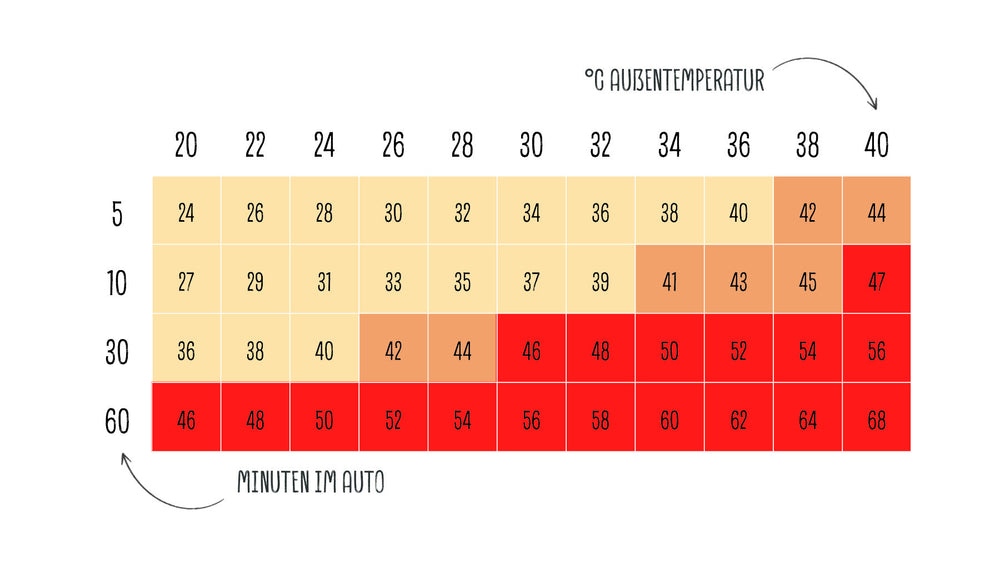
10 VEGDOG SPRING TIPS
 Author: Valerie Henssen
Author: Valerie Henssen
 Proofreader: Carla Steffen
Proofreader: Carla Steffen
It's that time again! Spring is here and has chased away the last of the nasty temperatures. The shivering walks in the cold are finally turning into long tours in the blooming nature. The temperatures are neither too cold nor too warm - just perfect for two-legged and four-legged friends! That's why we at VEGDOG agree: Spring has its very special charm.
In order to be able to fully enjoy this time of year, we would like to share with you today the 10 VEGDOG spring tips. Unfortunately, spring also hides potential dangers for our four-legged friends. The good news: with our tips and your appropriate behavior, nothing stands in the way of an active, healthy and beautiful spring time!
TIP 1: TICK PREVENTION
Unfortunately, spring is also tick season. Especially if you have a long-haired or dark dog, check him thoroughly for ticks and remove them immediately. In addition, the dog can be given a tick repellent. It is best to buy this from your vet, as many products from the Internet have not been sufficiently tested for their safety and effectiveness! It is important to prevent the transmission of diseases (e.g. Lyme disease, barbesiosis or anaplasmosis) to the dog if a tick bites. Unfortunately, alternative tick prevention methods such as amber necklaces, coconut oil in food or ceramic collars have not been convincing in studies and therefore do not offer reliable protection.
TIP 2: POLLEN ALLERGY
Your four-legged friend can also tend to suffer from typical spring allergies, such as pollen allergies. Often owners don't even notice the symptoms of an allergy, as these naturally vary from dog to dog. It manifests itself primarily in skin problems (e.g. atopic dermatitis) and, more rarely, in problems with the eyes or nose. Just like for us two-legged friends, there are medications for our four-legged friends that can bring spring back to life in the case of a pollen allergy and enable them to romp around without any problems. Such environmental allergies can only be diagnosed with certainty by the process of exclusion, ideally by a dermatology specialist. Unfortunately, blood, hair or saliva tests are not suitable for diagnosis.
TIP 3: SUN PROTECTION FOR FOUR-LEGGED FRIENDS

Dogs can also get sunburnt. So be careful with sensitive skin and fair-skinned animals. In this case, it is necessary to apply sunscreen to the tip of the nose and ears to protect the dog from sunburn. A burnt tip of the nose should be avoided at all costs so that nothing stands in the way of pain-free sniffing. UV radiation can also promote the development of skin cancer in our four-legged friends. Creams specifically for dogs or people (without fragrances) with an SPF of 15 or more can be used. The same applies to applying cream as for us humans: apply at least 30 minutes before sun exposure, repeat regularly and as much as necessary but not too much, which can then be licked off again.
TIP 4: INSECT BITES
A long spring walk can quickly come to an unpleasant end if an insect bites you. Your dog can react just as sensitively or even allergically to such stings as we do. If your four-legged friend has never been stung by a bee, wasp or other insect, you obviously cannot know whether your dog is allergic to such stings. For smaller stings or irritations, cooling or applying anti-allergic creams (e.g. Fenistil) helps. Insect bites in the head and throat area can cause dogs to have difficulty breathing due to swelling. If this is the case, you should visit your vet immediately!
TIP 5: TIME MANAGMENT WALKS
On particularly hot days, you should take your four-legged friend for a walk early in the morning or late in the evening if possible. This is when the temperatures are more bearable for your dog. Older and sick dogs in particular struggle with high temperatures even more than healthy dogs. When taking walks at lunchtime, make sure you choose routes with shade and as little asphalt as possible for your walk. Forests and parks offer a good alternation between sun and shade.
TIP 6: COOLING DOWN

Our dogs are not always able to cool off in the cool water on hot days. If there is no river or lake nearby, you can simply wet a towel with cold water. Many dogs love it and like to lie on the cold towels or the cold ground to counteract the high outside temperatures. Cool - not cold - water to drink can also help.
TIP 7: HEAT TRAP CAR – EVEN IN SPRING!

Just go shopping quickly and leave the dog in the car - it only takes a few minutes after all. It is now widely communicated that you shouldn't leave your four-legged friends waiting in the car for long in the summer. But even in spring, the supposedly first warm rays of sunshine can be torture for your dog in the car. At an outside temperature of 20°C, the temperature in the car can rise to 36°C after just 30 minutes. So don't underestimate the spring sun and always make sure the ambient temperature is dog-friendly if your shopping trip takes a little longer. Even better and ensures relaxation for both sides: leave your four-legged friend at home or in a suitable environment. After all, this makes shopping more fun.
TIP 8: BEWARE OF HEAT STROKE!
Since dogs cannot sweat through their skin like humans, they have a harder time keeping cool in high temperatures than we do. They can therefore quickly suffer from heat stroke. Correctly recognizing the signs and symptoms of heat stroke and then taking the necessary action can save the dog's life in an emergency.
The following symptoms may indicate heat stroke:
- persistent, heavy panting
- possibly increased salivation
- Skin inside the ears is very red and hot
- often the neck is elongated and the tongue hangs far out
- restlessness, nervousness and even panic
The following symptoms indicate a final heat stroke:
- shallow and rapid breathing
- Heart palpitations occur
- the mucous membranes under the tongue are very red
- the dog appears listless, absent and has balance problems
- Vomiting and/or bloody diarrhea can also be consequences of heat stroke
If the above symptoms are observed in your dog, you need to act quickly! To do this, you should:
- Take the dog to the veterinary practice as soon as possible and inform them of your impending arrival. This way, the necessary preparations can be made before you arrive.
- take the dog to a shady and cool place.
- First cool the paws and legs with cool water, then the stomach, back and neck.
- Offer the dog cool - not cold - drinking water. If the dog is no longer conscious, do not try to force it down his throat. If this happens, lay him on his side, stretch his head forward and up, and pull out his tongue.
- Use a thermometer to check the dog's body temperature every 5 minutes. Ideally, this should be between 37.5 and 39°C.
TIP 9: BUILDING CONDITIONS
If your dog hasn't been moving as much in the winter, don't overexert him now. Running alongside a bike isn't ideal for most breeds. So slow down in the spring and don't throw the stick quite so far!
TIP 10: HORMONES IN SPRING
If you have a womanizer, make sure that he doesn't bother female dogs excessively and/or cause fights with other male dogs. Because the spring sun doesn't just boost the dogs' endorphin release! 😉
Wishing you lots of fun and spring enjoyment
your VEGDOG team








